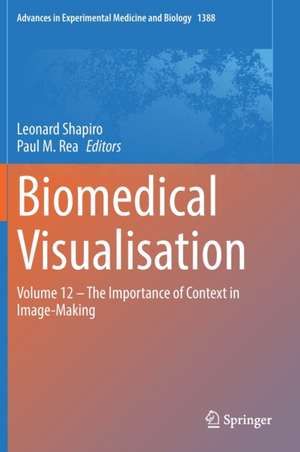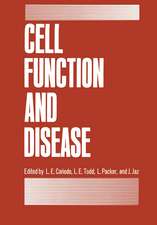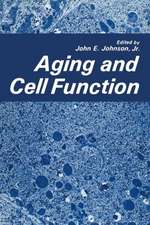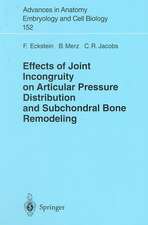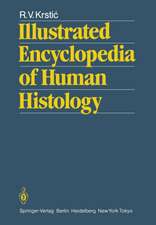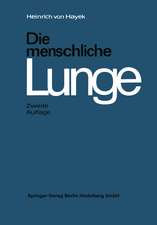Biomedical Visualisation: Volume 12 ‒ The Importance of Context in Image-Making: Advances in Experimental Medicine and Biology, cartea 1388
Editat de Leonard Shapiro, Paul M. Reaen Limba Engleză Hardback – 15 sep 2022
We hear from medical students about the value of using clay modelling in their understanding of anatomy, from educators and curriculum designers about visual affordances in medical education and from a community-driven project in South Africa about their innovative use of locally designed images and culture-specific narratives for communicating important health information to marginalised communities. A chapter explores the evolution of scientific visualisation and representation of big data to a variety of audiences, and another presents the innovative 3D constructionof internal cellular structures from microscopic 2D slices. As we embrace blended learning in anatomy education, a timely chapter prompts us to think further about and contribute to the ongoing discourse around important ethical considerations in the use and sharing of digital images of body donors.
This book will appeal to educators, medical illustrators, curriculum designers, post-graduate students, community health practitioners and biomedical researchers.
| Toate formatele și edițiile | Preț | Express |
|---|---|---|
| Paperback (2) | 1092.06 lei 6-8 săpt. | |
| Springer International Publishing – 16 sep 2023 | 1092.06 lei 6-8 săpt. | |
| Springer International Publishing – 4 dec 2023 | 1281.34 lei 6-8 săpt. | |
| Hardback (2) | 1100.49 lei 6-8 săpt. | |
| Springer International Publishing – 15 sep 2022 | 1100.49 lei 6-8 săpt. | |
| Springer International Publishing – 4 dec 2022 | 1289.76 lei 6-8 săpt. |
Din seria Advances in Experimental Medicine and Biology
- 9%
 Preț: 719.56 lei
Preț: 719.56 lei - 5%
 Preț: 1113.83 lei
Preț: 1113.83 lei - 20%
 Preț: 691.93 lei
Preț: 691.93 lei - 5%
 Preț: 717.00 lei
Preț: 717.00 lei - 5%
 Preț: 717.00 lei
Preț: 717.00 lei - 5%
 Preț: 715.35 lei
Preț: 715.35 lei - 5%
 Preț: 716.28 lei
Preț: 716.28 lei - 5%
 Preț: 239.86 lei
Preț: 239.86 lei -
 Preț: 642.95 lei
Preț: 642.95 lei - 5%
 Preț: 820.42 lei
Preț: 820.42 lei - 5%
 Preț: 715.71 lei
Preț: 715.71 lei - 15%
 Preț: 640.24 lei
Preț: 640.24 lei - 15%
 Preț: 641.38 lei
Preț: 641.38 lei - 5%
 Preț: 1031.00 lei
Preț: 1031.00 lei - 5%
 Preț: 716.28 lei
Preț: 716.28 lei - 5%
 Preț: 717.20 lei
Preț: 717.20 lei - 20%
 Preț: 1161.71 lei
Preț: 1161.71 lei - 5%
 Preț: 1170.51 lei
Preț: 1170.51 lei - 18%
 Preț: 1119.87 lei
Preț: 1119.87 lei - 5%
 Preț: 1288.48 lei
Preț: 1288.48 lei - 5%
 Preț: 1164.67 lei
Preț: 1164.67 lei - 5%
 Preț: 1101.73 lei
Preț: 1101.73 lei - 18%
 Preț: 1123.67 lei
Preț: 1123.67 lei - 5%
 Preț: 1435.64 lei
Preț: 1435.64 lei - 20%
 Preț: 1044.10 lei
Preț: 1044.10 lei - 18%
 Preț: 946.39 lei
Preț: 946.39 lei - 5%
 Preț: 292.57 lei
Preț: 292.57 lei - 18%
 Preț: 957.62 lei
Preț: 957.62 lei - 18%
 Preț: 1235.76 lei
Preț: 1235.76 lei - 5%
 Preț: 1231.55 lei
Preț: 1231.55 lei - 5%
 Preț: 1292.30 lei
Preț: 1292.30 lei - 5%
 Preț: 1102.10 lei
Preț: 1102.10 lei - 18%
 Preț: 1132.81 lei
Preț: 1132.81 lei - 5%
 Preț: 1165.19 lei
Preț: 1165.19 lei - 5%
 Preț: 1418.48 lei
Preț: 1418.48 lei - 5%
 Preț: 1305.63 lei
Preț: 1305.63 lei - 18%
 Preț: 1417.72 lei
Preț: 1417.72 lei - 18%
 Preț: 1412.99 lei
Preț: 1412.99 lei - 24%
 Preț: 806.15 lei
Preț: 806.15 lei - 18%
 Preț: 1243.29 lei
Preț: 1243.29 lei - 5%
 Preț: 1429.44 lei
Preț: 1429.44 lei - 5%
 Preț: 1618.70 lei
Preț: 1618.70 lei - 5%
 Preț: 1305.12 lei
Preț: 1305.12 lei - 18%
 Preț: 1124.92 lei
Preț: 1124.92 lei - 5%
 Preț: 1097.54 lei
Preț: 1097.54 lei - 15%
 Preț: 649.87 lei
Preț: 649.87 lei - 5%
 Preț: 1097.54 lei
Preț: 1097.54 lei - 18%
 Preț: 945.79 lei
Preț: 945.79 lei
Preț: 1100.49 lei
Preț vechi: 1158.41 lei
-5% Nou
Puncte Express: 1651
Preț estimativ în valută:
210.65€ • 221.30$ • 177.03£
210.65€ • 221.30$ • 177.03£
Carte tipărită la comandă
Livrare economică 11-25 martie
Preluare comenzi: 021 569.72.76
Specificații
ISBN-13: 9783031108884
ISBN-10: 3031108884
Pagini: 191
Ilustrații: XII, 191 p. 1 illus.
Dimensiuni: 178 x 254 mm
Greutate: 0.57 kg
Ediția:1st ed. 2022
Editura: Springer International Publishing
Colecția Springer
Seria Advances in Experimental Medicine and Biology
Locul publicării:Cham, Switzerland
ISBN-10: 3031108884
Pagini: 191
Ilustrații: XII, 191 p. 1 illus.
Dimensiuni: 178 x 254 mm
Greutate: 0.57 kg
Ediția:1st ed. 2022
Editura: Springer International Publishing
Colecția Springer
Seria Advances in Experimental Medicine and Biology
Locul publicării:Cham, Switzerland
Cuprins
Part I. Exciting Data and Representation.- Chapter 1. A Multimodal Social Semiotics Perspective on Teaching and Learning Using Biomedical Visualisations.- Chapter 2. Reasons for Knocking at an Empty House: Visualisation, Representation and Dissemination of Health-Related Public Engagement Media.- Chapter 3. The Evolution of Scientific Visualisations: A Case Study Approach to Big Data for Varied Audiences.- Part II. Biomedical Education: Theory and Practice.- Chapter 4. The Affordances of Visual Modes in Pedagogy on the Physics of Motion in Physiotherapy Education.- Part III. Making 3D.- Chapter 5. Mitochondria to Bitter Melon: Understanding the 3D Ultrastructure of the Cell via 2D Thin Section Reconstruction and the History of Mitochondrial Visualization.- Chapter 6. Using Molecular Visualisation Techniques to Explain the Molecular Biology of SARS-CoV-2 Spike Protein Mutations to a General Audience.- Chapter 7. Student-Perceived Value on the Use of Clay Modelling in Undergraduate Clinical Anatomy.- Part IV. Ethical Considerations.- Chapter 8. Advances in Digital Technology in Teaching Human Anatomy: Ethical Predicaments.
Notă biografică
Leonard Shapiro has a keen interest in Anatomy Education and has developed a number of art-derived exercises to address and improve students’ three-dimensional (3D) spatial awareness and observation ability. His courses and online workshops are in collaboration with lecturers who are actively engaged in improving education methodology in anatomy. These are offered to medical students and lecturers in South Africa and abroad. Leonard has developed a multi-sensory observation method that crucially employs the sense of touch (haptics) coupled with the simultaneous act of drawing. It is called the Haptico-visual observation and drawing (HVOD) method.
In anatomy education, the benefits of observing using the HVOD method includes the enhanced observation of the 3D form of anatomical parts, the cognitive memorization of anatomical parts as a 3D 'mental picture', improved spatial orientation within the volume of anatomical parts and an ability to draw. Leonard contributes tothe anatomy education discourse by presenting at anatomy conferences as well as via publications and articles. Leonard graduated in BSocSc and in BA Fine Art (Hons) from the University of Cape Town, South Africa.
Paul M. Rea - Paul is Professor of Digital and Anatomical Education at the University of Glasgow. He is Director of Innovation, Engagement and Enterprise within the School of Medicine, Dentistry and Nursing. He is also a Senate Assessor for Student Conduct, Council Member on Senate and coordinates the day-to-day running of the Body Donor Program and is a Licensed Teacher of Anatomy, licensed by the Scottish Parliament.
He is qualified with a medical degree (MBChB), a MSc (by research) in craniofacial anatomy/surgery, a PhD in neuroscience, the Diploma in Forensic Medical Science (DipFMS), and an MEd with Merit (Learning and Teaching in Higher Education). He is a Senior Fellow of the Higher Education Academy, professional member of the Institute of Medical Illustrators (MIMI) and a registered medical illustrator with the Academy for Healthcare Science.
Paul has published widely and presented at many national and international meetings, including invited talks. He has been the lead Editor for Biomedical Visualisation over 11 published volumes and is the founding editor for this book series. This has resulted in almost 70,000 downloads across these volumes, with contributions from over 300 different authors, across approximately 100 institutions from 16 countries across the globe. He sits on the Executive Editorial Committee for the Journal of Visual Communication in Medicine, is Associate Editor for the European Journal of Anatomy and has reviewed for 25 different journals/publishers. He is the Public Engagement and Outreach lead for anatomy coordinating collaborative projects with the Glasgow Science Centre, NHS and Royal College of Physicians and Surgeons of Glasgow. Paul is also a STEM ambassador and has visited numerous schools to undertake outreach work. His research involves a long-standing strategic partnership with the School of Simulation and Visualisation The Glasgow School of Art. This has led to multi-million pound investment in creating world leading 3D digital datasets to be used in undergraduate and postgraduate teaching to enhance learning and assessment. This successful collaboration resulted in the creation of the worlds first taught MSc Medical Visualisation and Human Anatomy combining anatomy and digital technologies. The Institute of Medical Illustrators also accredits it. It has created college-wide, industry, multi-institutional and NHS research linked projects for students. Paul is the Programme Director for this degree.
In anatomy education, the benefits of observing using the HVOD method includes the enhanced observation of the 3D form of anatomical parts, the cognitive memorization of anatomical parts as a 3D 'mental picture', improved spatial orientation within the volume of anatomical parts and an ability to draw. Leonard contributes tothe anatomy education discourse by presenting at anatomy conferences as well as via publications and articles. Leonard graduated in BSocSc and in BA Fine Art (Hons) from the University of Cape Town, South Africa.
Paul M. Rea - Paul is Professor of Digital and Anatomical Education at the University of Glasgow. He is Director of Innovation, Engagement and Enterprise within the School of Medicine, Dentistry and Nursing. He is also a Senate Assessor for Student Conduct, Council Member on Senate and coordinates the day-to-day running of the Body Donor Program and is a Licensed Teacher of Anatomy, licensed by the Scottish Parliament.
He is qualified with a medical degree (MBChB), a MSc (by research) in craniofacial anatomy/surgery, a PhD in neuroscience, the Diploma in Forensic Medical Science (DipFMS), and an MEd with Merit (Learning and Teaching in Higher Education). He is a Senior Fellow of the Higher Education Academy, professional member of the Institute of Medical Illustrators (MIMI) and a registered medical illustrator with the Academy for Healthcare Science.
Paul has published widely and presented at many national and international meetings, including invited talks. He has been the lead Editor for Biomedical Visualisation over 11 published volumes and is the founding editor for this book series. This has resulted in almost 70,000 downloads across these volumes, with contributions from over 300 different authors, across approximately 100 institutions from 16 countries across the globe. He sits on the Executive Editorial Committee for the Journal of Visual Communication in Medicine, is Associate Editor for the European Journal of Anatomy and has reviewed for 25 different journals/publishers. He is the Public Engagement and Outreach lead for anatomy coordinating collaborative projects with the Glasgow Science Centre, NHS and Royal College of Physicians and Surgeons of Glasgow. Paul is also a STEM ambassador and has visited numerous schools to undertake outreach work. His research involves a long-standing strategic partnership with the School of Simulation and Visualisation The Glasgow School of Art. This has led to multi-million pound investment in creating world leading 3D digital datasets to be used in undergraduate and postgraduate teaching to enhance learning and assessment. This successful collaboration resulted in the creation of the worlds first taught MSc Medical Visualisation and Human Anatomy combining anatomy and digital technologies. The Institute of Medical Illustrators also accredits it. It has created college-wide, industry, multi-institutional and NHS research linked projects for students. Paul is the Programme Director for this degree.
Textul de pe ultima copertă
This image-rich book explores the practice as well as the theory of visual representation and presents us with the importance of designing appropriate images for communication to specific target audiences. This includes the appropriate choice of high-tech digital or low-tech analogue technologies in image-making for communication within the medical education, biological research and community health contexts.
We hear from medical students about the value of using clay modelling in their understanding of anatomy, from educators and curriculum designers about visual affordances in medical education and from a community-driven project in South Africa about their innovative use of locally designed images and culture-specific narratives for communicating important health information to marginalised communities. A chapter explores the evolution of scientific visualisation and representation of big data to a variety of audiences, and another presents the innovative 3D construction of internal cellular structures from microscopic 2D slices. As we embrace blended learning in anatomy education, a timely chapter prompts us to think further about and contribute to the ongoing discourse around important ethical considerations in the use and sharing of digital images of body donors.
This book will appeal to educators, medical illustrators, curriculum designers, post-graduate students, community health practitioners and biomedical researchers.
This book will appeal to educators, medical illustrators, curriculum designers, post-graduate students, community health practitioners and biomedical researchers.
Caracteristici
Presents innovative ways of designing imagery for specific audiences. Highlights how visualization influences the accessibility of scientific information Discusses the use of visualisation techniques in biomedical teaching
